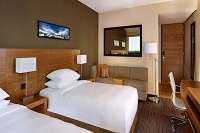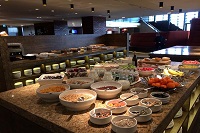Venue & Hospitality
Welcome to the Official Attendee Housing Site for our esteemed event "Endocrinology and Metabolic Syndrome 2018" at HYATT PLACE AMSTERDAM AIRPORT Rijnlanderweg 800, 2132 NN Hoofddorp, Amsterdam, Netherlands during June 28-29, 2018
Venue:
HYATT PLACE AMSTERDAM AIRPORT
Rijnlanderweg 800, 2132 NN Hoofddorp, Netherlands
Conference Dates: June 28-29, 2018
Hotel Services & Amenities
- Audio/Visual Equipment Rental.
- Business Center.
- Business Phone Service.
- Complimentary Printing Service.
- Express Mail.
- Fax.
- Meeting Rooms.
- Office Rental.
- Photo Copying Service.
- Secretarial Service.
- Telex.
- Typewriter.
- Video Conference.
- Video Messaging.
- Video Phone.
- ATM.
- Baggage Storage.



Transportation
Driving Directions to
Route Map
About City
Amsterdam has a population of 841,186 within the city proper, 1,337,743 in the urban area and 2,431,000 in the Amsterdam metropolitan area. The city is located in the province of North Holland in the west of the country. It is the most visited place by the newcomers; it is the nominal capital of Amsterdam. It is also identified as the seat of Netherlands government in Hague. Amsterdam is the most tourist’s undergoing the city center, the semi –circle with central station at its summit. The three x shaped saint Andrew architecture is the symbol of Amsterdam.
The etropolitan area comprises much of the northern part of the Randstad, one of the larger conurbations in Europe, with a population of approximately 7 million. Amsterdam’s the name derives from Amstelredamme the city’s origin as a dam of the river Amstel. Originating as a small fishing village in the late 12th century, Amsterdam became one of the most important ports in the world during the Dutch Golden Age a result of its innovative developments in trade. During that time, the city was the leading centre for finance and diamonds and in the 19th and 20th centuries the city expanded, and many new neighbourhoods andsuburbs were planned and built.
The 17th-century canals of Amsterdam and the 19–20th century Defence Line of Amsterdam are on the UNESCO World Heritage List. As the commercial capital of the Netherlands and one of the top financial centres in Europe, The city is also the cultural capital of the Netherlands. Amsterdam was ranked the second best city in which to live by the Economist Intelligence Unit and 12th globally on quality of living for environment and infrastructure by Mercer. Amsterdam’s main attractions, including its historic canals, the Rijksmuseum, the Van Gogh Museum, Stedelijk Museum, Hermitage Amsterdam, Anne Frank House, Amsterdam Museum, its red-light district, and its many cannabis coffee shops draw more than 5 million international visitors annually.
